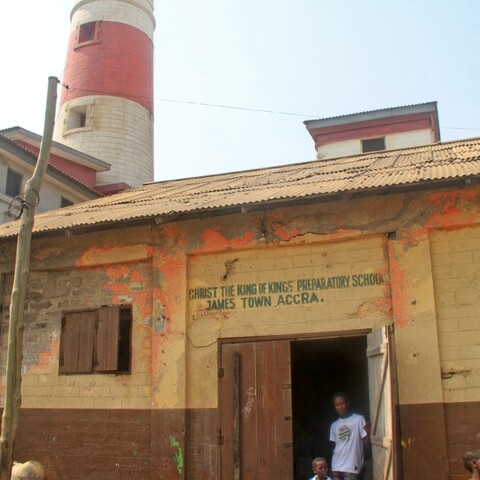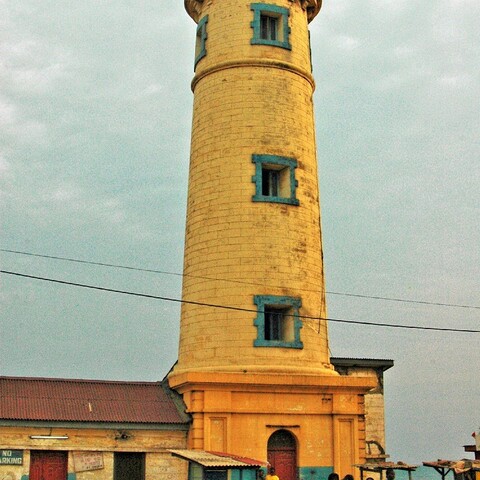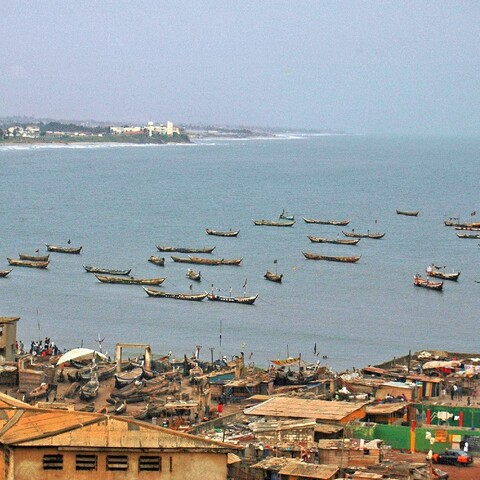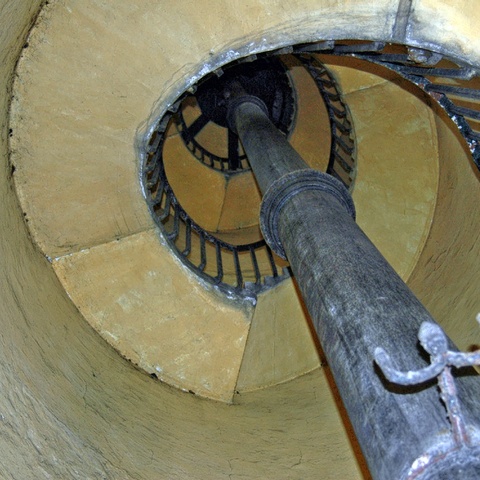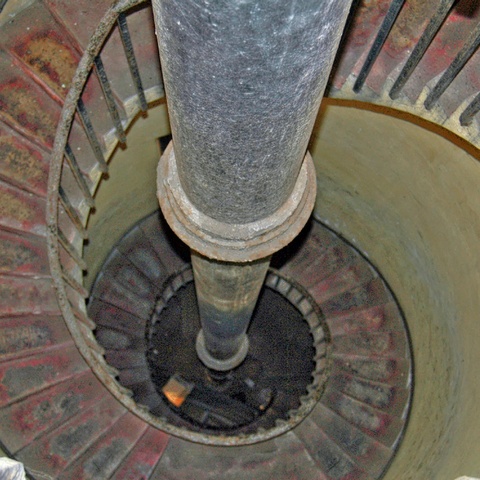Jamestown Lighthouse: A Beacon of History on Accra’s Coast
Standing tall over the coastline of Accra’s oldest district, the Jamestown Lighthouse is a striking symbol of Ghana’s maritime heritage and colonial past. Located in the historic fishing community of Jamestown, this iconic red-and-white striped tower is one of Accra’s most recognized landmarks, offering panoramic views over the Atlantic Ocean, the old city, and the bustling harbor below.
Though now surrounded by vibrant urban life and fishing activity, the lighthouse continues to serve as a reminder of Ghana’s colonial legacy, seafaring history, and the vital role of Accra as a port city for centuries.
Historical Background
The original lighthouse at Jamestown was built by the British in the 1870s, during the colonial era, as part of a broader effort to improve navigation and safety along the Gulf of Guinea — a key maritime route for trade and commerce. This original structure was a modest tower made of iron and stone, guiding ships safely into the port of Accra, which was becoming a central hub in the Gold Coast's colonial economy.
As maritime activity increased, a newer and taller lighthouse was constructed in 1930 to replace the old one. The current Jamestown Lighthouse rises about 28 meters (92 feet) high and includes a spiral staircase leading to a small viewing platform at the top. From here, visitors are treated to sweeping views of the coastline, the Ussher Fort, James Fort, the Jamestown fishing harbor, and the wider cityscape of Accra.
A Landmark in a Living Community
Jamestown itself is one of the most historic neighborhoods in Accra, dating back to the 17th century when it was established around James Fort, one of several European forts built along the coast. The area has grown into a vibrant, working-class community known for its rich Ga traditions, colonial architecture, and dynamic street life.
The lighthouse, though no longer as essential to maritime navigation as it once was, remains a symbol of continuity in a neighborhood where history and everyday life exist side by side. Fishermen still launch their colorful wooden canoes from the nearby beach, children play in narrow alleys lined with colonial-era buildings, and artists find inspiration in the district’s raw energy and historic charm.
Tourism and Cultural Significance
Today, the Jamestown Lighthouse is a popular tourist attraction, particularly for those interested in Ghana’s history, architecture, and coastal culture. Climbing to the top offers not only an excellent photo opportunity but also a chance to reflect on the role the coast played in Ghana's colonial past — including trade, migration, and resistance.
The area around the lighthouse is also known for cultural events such as the Chale Wote Street Art Festival, which transforms the neighborhood into an open-air gallery of art, performance, and music, bringing together local and international creatives.
The Jamestown Lighthouse is more than just a navigational tool of the past — it is a historic monument, a community landmark, and a vantage point into the layers of Accra’s history. Whether you're a first-time visitor to the city or a local resident rediscovering its roots, the lighthouse stands as a proud sentinel on the coast, offering both breathtaking views and a deeper connection to the story of Ghana’s capital.

3 girls selling fruits and food at the road side. (c) Strictly by Remo Kurka (photography)



